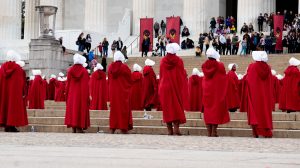Archaeology team to identify artifacts
April 30, 2013
Archaeologists from Georgia Southern University will commence a conservation project to conserve and identify metal artifacts at Camp Lawton.
The project is a stepping-stone in the development for the opening of a planned History Center at the park, according to a news release.
Camp Lawton is a Confederate Prisoner of War camp located in Millen, at what is now Magnolia Springs State Park.
The GSU Archaeology Team will host a Public Archaeology Day at Magnolia Springs State Park on Saturday from 10 a.m. – 3 p.m. to celebrate Georgia Archaeology Month, according to the news release.
Admission to Magnolia Springs State Park is $5. The event is open to the public and visitors will be able to assist with the excavations and see the conservation process.
GSU archaeologists will X-ray 150-year-old recovered artifacts to determine the remnants inside the corroded metal.
Gateway Animal Hospital of Statesboro will be donating its staff and equipment to assist the archaeology team in its project.
“Some of the artifacts that we have discovered are extremely corroded which is making it difficult to identify what they are. The X-ray will enable us to clearly identify the shape of the artifact if the metal has not totally corroded away,” Matt Newberry, graduate student working on the Camp Lawton project team, said in the news release.
In the ground, metal artifacts corrode in the soil and adapt to the water and mineral content of the new environment. After the artifacts are excavated, there is a completely new environment to adapt to, which could cause further damage to the artifacts, according to the news release.
“It is important that we work to conserve these artifacts so that they can help tell the story of Camp Lawton to future generations,” Lance Greene, assistant professor of anthropology, said in the news release.
Greene said in the news release, “Once the conservation process is completed, the Camp Lawton artifacts will be stable and ready for permanent display in the new History Center.”





